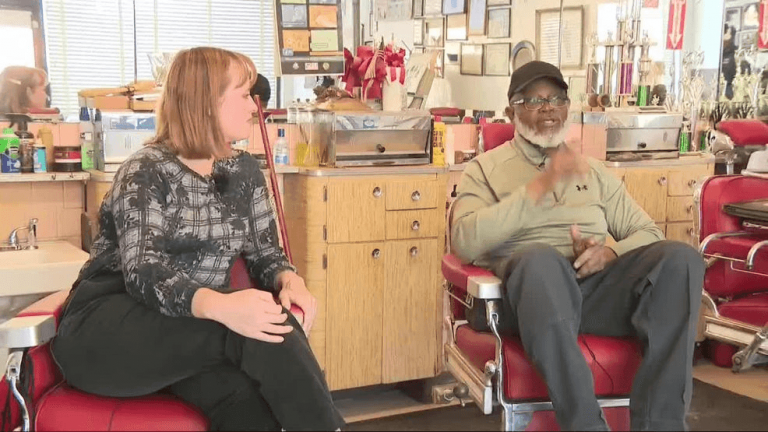EL PASO, Texas (KFOX14/CBS4) — The Black History Living Businesses Museum offers a glimpse into the vibrant past of Black Wall Street, a bustling business district that thrived near the Five Points area from the Civil War era until the construction of the interstate.
Michael Davis, son of Miss Esteen Davis, shared insights into the history preserved within the museum, including his mother’s barbershop.
“My name is Michael Davis and I’m the son of Miss Esteen Davis. She’s been, she owned this business for over 70 years. She cut hair in El Paso. She was an owner of a black business, a female owner of a black business since the 1960s,” said Davis.
Reflecting on his childhood, Davis recalled, “I actually used to shine shoes right here. Oh really? When I was a youngster, okay? And how much did you charge back then? I think it was 25 cents. Oh wow, that’s a deal. For boots. A dollar I believe for combat boots.”
Davis explained the historical significance of freedom colonies, stating, “Many black people after the Civil War formed what we call freedom colonies. The pillar of, the four pillars of a freedom colony is the cemetery, a black cemetery, a black church, a general store, and a school.”
His family, the Hills, Fontaine Shelby family, settled in a freedom colony in Deville, Texas, before migrating to El Paso during the Great Depression as part of President Franklin Roosevelt’s Civilian Conservation Corps initiative.
“What black folks continued to do was develop more and more businesses. When you walk through the Living Music, the Black Business Living Museum, you’ll see where there was a concentration of black businesses in this area alone, which we call the Alameda-Piedras Corridor. There were over 60 plus black businesses from 1950 through the 1970s,” Davis said.
The museum also highlights significant historical events, such as Dr. Nixon’s fight for voting rights.
“Dr. Nixon was the first black person who went in to vote. He went to the fire station right down the street here on Texas Street, fire station five. He was denied that opportunity to vote. He took it to court. He won 20 years later. He was able to vote. The first NAACP in the state of Texas was formed right here in Al Paso,” Davis noted.
The construction of Interstate 10 in the 1950s had a profound impact on the community.
“Interstate 10, just like an introduction of highways, is always placed into low-income communities regardless of where you were in the country, whether it was Chicago, Houston, or Dallas. When they did that, and the domain, was implemented, people were moved. That happened here in El Paso,” Davis explained.
The museum serves as a testament to the resilience and entrepreneurial spirit of the Black community in El Paso. Miss Esteen Davis used the earnings from her barbershop to build her own home, moving from Taze Projects to Medetta Street, where she still resides.
Visitors to the museum can explore more of this rich history, including tributes to an old record store, a hair salon, and other significant sites.
RECOMMENDED: ARC El Paso Legal Jargon: Why jury duty is crucial to the American legal system?
Sign up to receive the top interesting stories from in and around our community once daily in your inbox.




